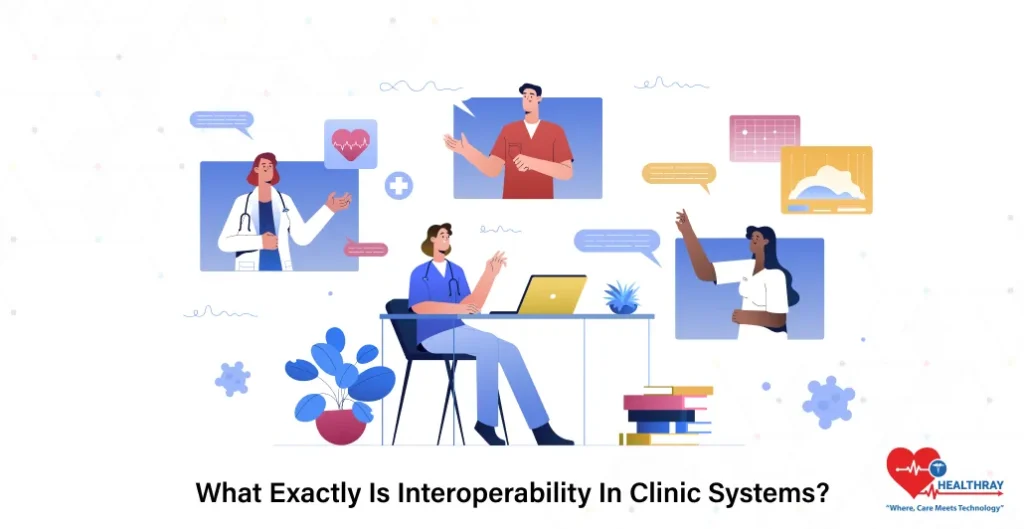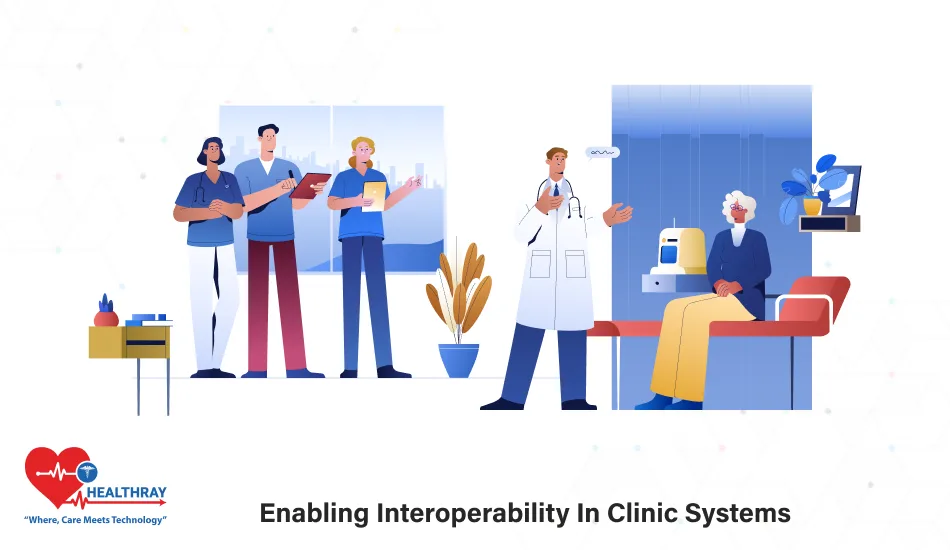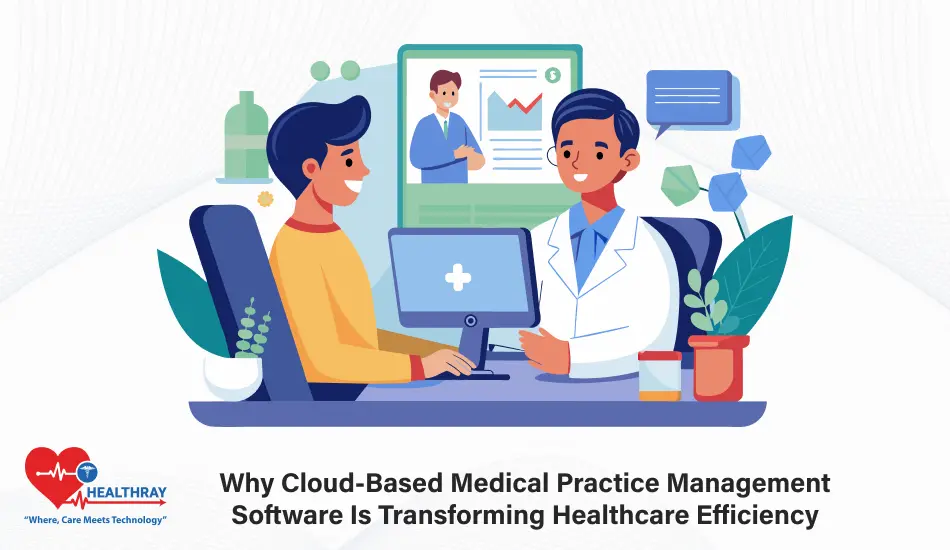Quick Summary
Interoperability in clinic systems connects all your tools so they work together. Your lab, billing, and patient data stay in sync. So there is no more jumping between platforms or losing info. Everything feels seamless, quick, and more accurate. It helps doctors work smartly and patients get better care.
Introduction
Have you ever walked into the clinic and had to fill out the same forms again? It is irritating that you have to do the same thing again and again. Your medical history exists somewhere, but different systems can’t talk to each other.
This is where interoperability in clinic systems steps in. It simply connects multiple digital tools to manage patients. It is like you are teaching computers to speak the same language.
In this post, we will explore what it is and why it matters. We will also discuss why you should enable interoperability in your clinic management software. Let’s keep it simple so you don’t get overwhelmed at once.
What Exactly Is Interoperability in Clinic Systems?

In the easiest words, you can say interoperability means connecting various software to work smoothly. It links every digital tool in the clinic and shares data in real time.
The clinic works in a team. All members, from the doctors to the billing desk, must work together. Even if one person doesn’t share updates, the whole team crumbles. That is where interoperability in clinic systems changes this scene. With this, everyone can see the information instantly.
There are three kinds of interoperability:
- Technical: Systems can share data through networks or APIs.
- Semantic: The data shared carries the same meaning everywhere.
- Process-based: The data fits perfectly into each workflow.
When the clinic uses this system, everything runs in better flow. So the doctors don’t have to spend so much time searching for data. The nurse and your other staff make a few errors. Even the patients get quick care.
Why Clinics Need Interoperability

It is usually hard to manage data in healthcare. A single patient may have multiple reports and prescriptions. They also may have had test results years ago. Without connected systems, it is chaos.
Here’s why interoperability in clinic systems matters so much:
Better Care, Fewer Mistakes
When all the systems are connected, doctors get a complete picture of the patient’s medical history. They can view all the reports, lab results, allergies, and past visits. So they don’t have to switch between screens and tabs for the details.
With this system, the errors are cut short instantly because the doctors have the right information. Even patients are at ease as they don’t have to explain their information again and again.
Here’s what that looks like in action:
- Doctors see the full patient history instantly
- No confusion between test results
- Fewer errors in prescriptions
- Patients get safe and more accurate treatment
Quick Service
Everyone hates to wait, especially patients. The doctor also hates delays. Interoperability in clinic software fixes both. Your staff would not have to waste time searching for files or calling labs. With just one click, everything is sorted.
This speed also means that patients move quickly with their appointments. They don’t have to sit around wondering when their name will be called. The click runs smoothly like a well-timed clock.
Let’s see what makes the process move faster every single day:
- Quick data sharing between departments
- No waiting for files or reports
- Instant updates for doctors and staff
- Shorter patient waiting times
Step towards digital era with our healthcare solution
Revamp your hospital facilities and embrace change for better healthcare management. Ease in managing and organizing large medical datasets leads to effective analysis. Seize the opportunity now!
Happy Patients
Patients love it when they get fast and stress-free visits. Interoperability makes their experience smooth as they don’t have to answer the same questions again and again. They also get regular updates and reminders. With easy online reports accessible, they feel more cared for and informed.
Interoperability in clinic systems helps to build trust and loyalty. The doctor has the complete history of the patients. This makes visits more personal, and patients feel more cared for.
Just see the difference below:
- No need to repeat the same details
- Shorter wait times and faster responses
- Easier access to reports and prescriptions
- Better follow-ups after visits
Faster decisions
When everything is connected, decisions happen in minutes rather than hours. With interoperability, doctors can view the complete medical history of patients in one go. They don’t have to waste time searching the reports and lab results. Because of this, they can make quick decisions.
These systems help in emergencies where every second counts. The right data at the right time saves lives. This is the power of connected care.
Here is how interoperability helps doctors make decisions on the spot:
- Access to complete health data
- Lab reports are visible instantly
- Medical history in one place
- More confident diagnosis
Less manual work
Clinics have so much paperwork, which eats up so much time. Interoperability in clinic systems solves that. It completes a lot of routine work automatically. Your staff doesn’t have to copy the data from one system to another.
This system eventually reduces the mistakes, and your team gets more time for patients. It also reduces stress for everyone working behind the scenes.
This is how staff save hours every day:
- Automatic patient record updates
- Fewer data entries
- No repeated typing or searching
- Staff can focus on patients, not paperwork
No duplicate testing
It is very tiring to do the same tests so many times. This wastes time, money, and patient trust. Interoperability stops this from happening. When doctors see that the tests are already done, they avoid doing them again.
This saves costs, keeps patients happy, and even improves coordination between departments. So your whole medical team stays on the same page.
Here’s how clinics avoid wasting time and money on repeat tests:
- Shared access to reports
- Doctors see existing test results
- Reduced patient costs
- Less confusion about which tests are done
Smooth telehealth
Telehealth becomes effortless if your system is connected well. With interoperability in clinic systems, doctors can instantly pull up a patient’s full history during a video call. This makes virtual care seamless and even more reliable.
Connected data means follow-ups, prescriptions, and future appointments happen without confusion. So the patients get consistent care whether they visit in person or online.
Here’s how telehealth works effortlessly with interoperability:
- Instant sharing of digital records
- Easy video consultations
- Quick prescriptions from anywhere
- Better follow-ups after virtual visits
Comparing Different Approaches
We understand that not all clinics run the same way. Some have interoperability in clinic systems, while others still work the old-fashioned way.
So how would you know which will be best for your clinic? Here is a quick comparison that will make you understand which is better.
| Area | With Interoperability in Clinic Systems | Without Interoperability |
| Data Access | Everything in one place | Scattered and hard to find |
| Speed | Fast and connected | Slow and manual |
| Communication | Smooth teamwork | Miscommunication |
| Patient Care | Safe and quick | Delays and repeats |
| Security | Safe with role-based access | Hard to control |
| Telehealth Support | Works easily with virtual visits | Disconnected, harder to manage remotely |
| Decision-Making | Quick and accurate | Delayed and uncertain |
The difference is clear. Interoperability connects every corner of your clinic. It saves your time, reduces mistakes, and even makes daily work easy.
Whereas without interoperability, every department has to work alone. Things move more slowly with this. Even reminders and reports take longer. Without tools like appointment reminders & automation, staff manually call or text patients, wasting hours every week.
So interoperability in clinic systems is the backbone of modern healthcare, which makes every visit worth it.
Conclusion
Everything works naturally in the clinic when tools are well-connected. With Interoperability in clinic systems, data moves easily, and teams have better coordination. Even patients also get quick and the best care. There is no more confusion and no lost files. You can view everything in just one place.
When systems link with each other, routine tasks for your staff are easy to do. Doctors make quick decisions, staff stay calm, and patients trust the process. With role-based access control in clinic software, your team can share documents safely with each other.
Every clinic deserves that kind of flow. Interoperability brings a smart and simple way for better care. And if you ever want to see how this works in real life, you can check out platforms like Healthray. Start small and see how interoperability in clinic systems changes everything.





